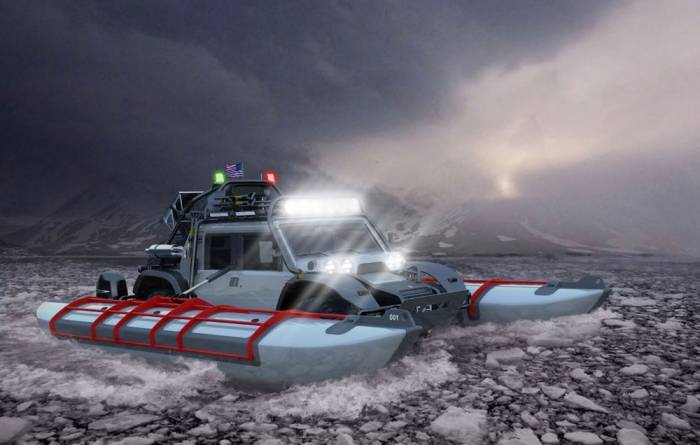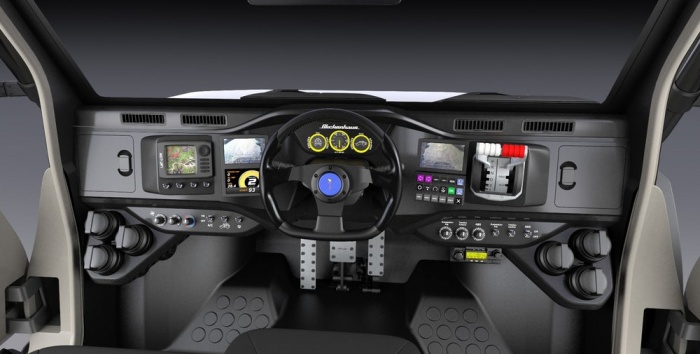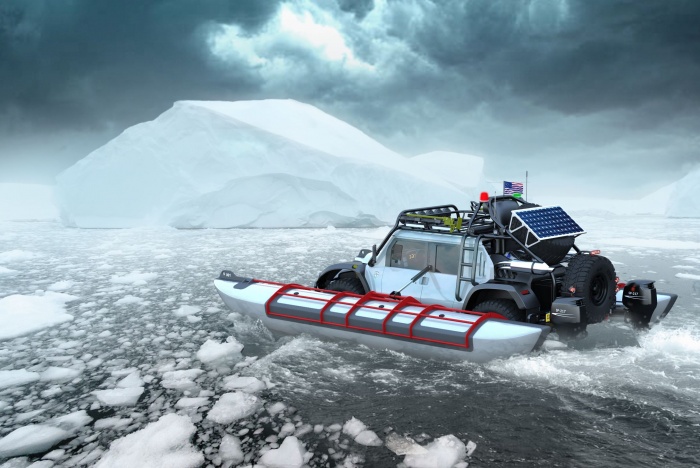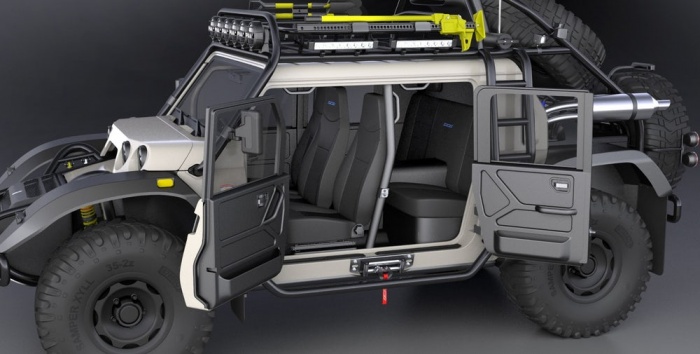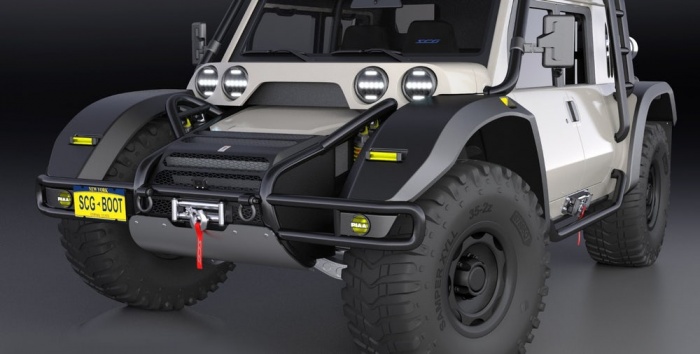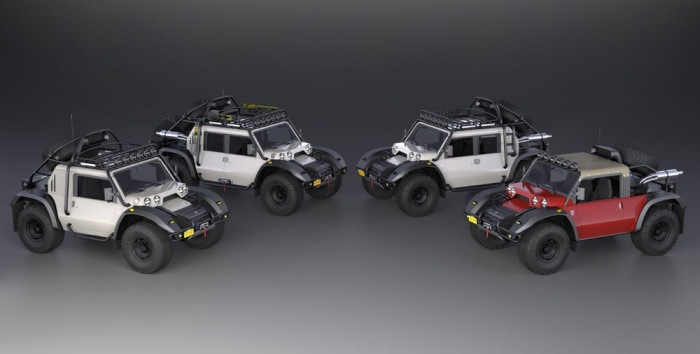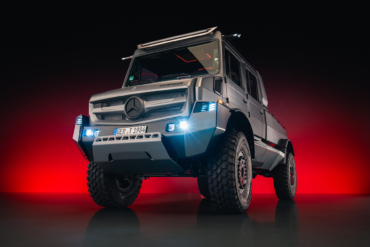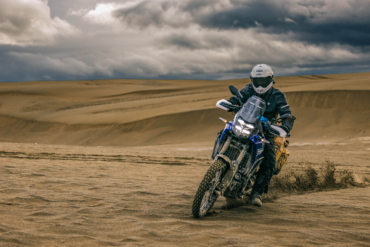Originally piloted by the King of Cool himself, Steve McQueen, the Baja Boot now has an eccentric owner. And its progeny has a wild off-road future.
If Herbie the Love Bug and a Humvee had a child, it might look something like the original Baja Boot. Today, this classic has been reinvented as a futuristic, barrier-breaking vehicle.

First, a little history. In 1967, two of the aggressive-yet-cute buggie-style off-roaders came to life with the sole purpose of conquering the Baja 1000 desert race.
Steve McQueen bought ’em both and went on to pilot them in the Baja and another desert race, the Stardust 711. The vehicles were a slice of off-road racers’ lore for nearly a half-century thereafter. Until 2010, when movie producer and auto collector Jim Glickenhaus bought one of them.
Fast forward eight years, Glickenhaus has his own “hypercar” brand, Scuderia Cameron Glickenhaus (SCG). And the company’s next project aims to put the Baja Boot (back) in the record books with some unbelievable feats.
SCG Boot: Baja, Expedition

A quick note on Glickenhaus’s filmography, in the extremely likely event you’re unfamiliar. His production credits include ’90s cult classics direct-to-VHS releases Timemaster, Frankenhooker, and Basket Case 2 and 3. Needless to say, he’s taken his penchant for twisted cinema and “Frankenhooked” it into automobiles.
In January, SCG announced it will launch a consumer run of SCG Boots in 2019. The first aim will be (again) tackling the Baja 1000. But soon after that, things get weird.
According to SCG’s site, following the planned launch next year, the brand has already “explored setting a world altitude driving record with our Expedition Boot.”

That would mean toppling the 10-year-old record of 21,942 feet set by Gonzalo Bravo and Eduardo Canales along Chile’s Ojos Del Salado volcano. For context, that’s about three-quarters of the distance up Everest, and the duo did it in the cult-beloved Suzuki Samurai.
SCG claimed it would go right ahead to the volcano’s 22,615-foot peak.
At this point, SCG has only renderings of the re-Boot. The images depict the buggy annihilating mountain terrain. But that’s not all, there are images of the Boot navigating all manner of terra firma – and not-so firma.
According to SCG, once it’s seized the altitude record, the Expedition will take off on the road-trip-to-top-all-road-trips. In 2020, a Boot will depart New York and head west. Along the way it will bear north until it reaches the Bering Sea – an epic trek by itself.
Once it hits water’s edge though, SCG doesn’t intend to stop.
Driving Across The Bering Sea?
And this is where we’re starting to question the sanity of this plan. By its own admission and renderings, the Boot will deploy amphibious pontoons and cross the Bering Sea. At its narrowest point, with reliable navigation and conditions, that’s a 51-mile crossing.
Never mind this is one of the most dangerous stretches of ocean in the world that sinks crab ships with veteran captains at the helm.
But crazy as it sounds, this has been done before! In 2008, Steve Burgess floated his Land Rover across the Bering Sea. He stripped that vehicle down to the essentials, strapped on some floats and an engine propeller, and crossed. Of course, it took weeks for him to make the 56-mile voyage due to extremely harsh weather.
SCG released the very docile image of the buggy peacefully navigating icebergs, below.
Oh, and the Boot won’t stop there. This plan is audacious to say the least.
Once its tires grab purchase, the Boot plans to make its way to the R504 Kolyma Highway, affectionately known as The Road of Bones (thanks to the gruesome forced labor behind its construction).
Then, the all-terrain – emphasis on “all” – vehicle will take the 6,835-mile Trans Siberian Highway into St. Petersburg, Russia. From there, it enters the final leg of the journey to its destination in Paris.
And because SCG wants a fair fight against other off-road vehicles, it graciously invited all other major manufacturers to join along for the ride.
Talk about a call-out! We’ll be interested to see if there are any takers. Maybe Volkswagen will want to retrofit its Amarok?
Look for the first road-legal versions of the Boot in 2019. A two-door model will run you $250,000, while the family-friendly four-door will go for $275,000. As far as the rest of this adventure? Well, it seems far-fetched to say the least. We’ll keep our ears to the ground (and sea) to follow along if it becomes reality.

